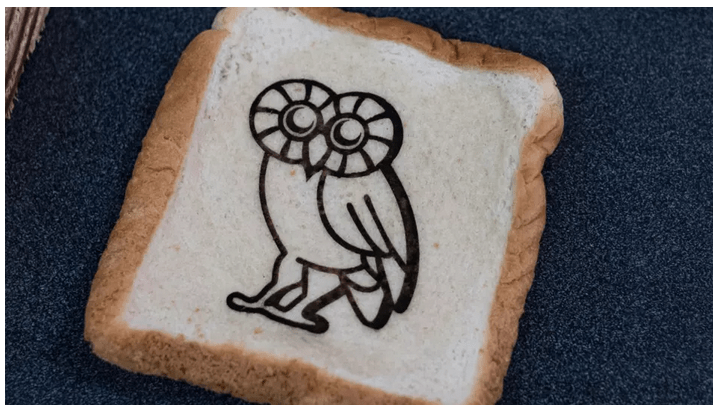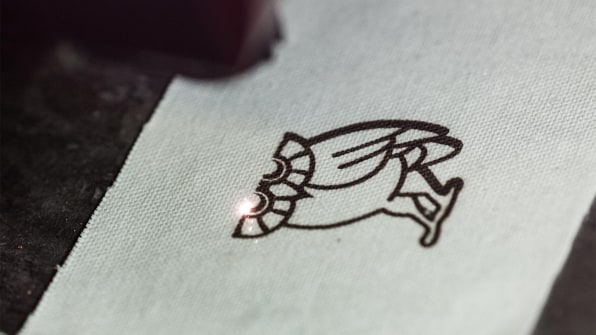Using a stock laser, researchers can carve edible circuits into food. Prepare for cuisine that can communicate.

[Photo: Jeff Fitlow/Rice University]
Now, we might know. Rice University researchers have successfully used a commercial laser to transform the surface carbon in foods–like toast, coconuts shells, potatoes, and Girl Scout cookies–into graphene. Without using any special vacuums or clean rooms, graphene can be patterned into an impossibly thin, edible circuit–including fuel cells to store power, radio hardware to transmit data, glowing elements to light up, and even all sorts of sensors, too. These circuits resemble a dark, inky tattoo, a bit like very burnt toast.

“Very often, we don’t see the advantage of something until we make it available,” said the lab’s lead James Tour in a press release. “Perhaps all food will have a tiny RFID tag that gives you information about where it’s been, how long it’s been stored, its country and city of origin, and the path it took to get to your table.”He goes onto speculate further, too, pointing out that E. coli sensors could be designed to spot if your food was contaminated–and a circuit might glow a warning light in response. If these components were graphene-based, they’d all be edible. In such a future, food wouldn’t just be more trackable. It could actually contain its own warnings. Given that tracking foodborne illnesses is remarkably difficult within the expansive global supply chain, it’s a promising solution.
It’s fun to speculate on the other possibilities, too. In the future, much of what we eat could contain a complete interactive layer that we can barely even envision right now. (Think of a literal apple that puts 1,000 songs in your pocket. Or a birthday cake that lights its own candles.) However, one question that remains is just how many foods to which this new lasering technique can be applied, since the technique only seems to work on foods high in lignin, the rigid plant polymer found in woody items like cork.
If eating electrical devices is too hard to stomach, know that the same technique could work elsewhere too: Tour’s laser works on both wood and cloth as well, meaning it could be an easy way to turn garments into flexible wearables, patterned by their own circuits.
___
https://www.fastcompany.com/90160784/edible-graphene-is-here-and-electronics-in-your-food-are-coming
